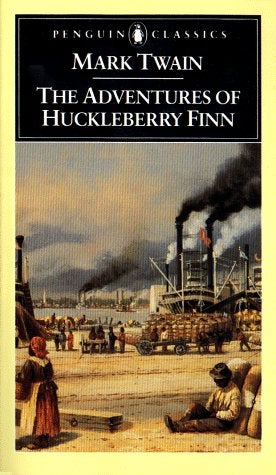

Another says that some 30,000 copies had been printed and were awaiting shipment when Uncle Silas’ exposure was discovered.Įither way, Twain and Webster had a fit, and printed copies with the Silas illustration were ruthlessly hunted down and either destroyed or sent back to the company to be fixed. One says that only 3,000 advance copies were already made, and only 250 had been sent out. There are various versions of the events that followed. In a picture of Uncle Silas speaking to a young boy while Aunt Sally looks on with a smile, Silas sports a crudely drawn penis, or at least a shadowy bulge in his pants. When the salesman cracked open his sample of the book, he found that someone - maybe a mischievous printer, or one frustrated with delays maybe Kemble taking revenge for the rejected drawings - had made a last-minute addition to one of the illustration printing plates. The first run was being printed, and advance copies were already out being shown to potential customers, when Webster got a panicked letter from a salesman in Chicago. It is a disgusting thing and the pictures are sure to tell the truth about it too plainly.”įinally, Twain was happy with all the drawings and the book went to press. “Let’s not make any pictures of the camp meeting. “It is powerful good, but it musn’t go in,” he explained to Webster. Twain asked that one of the drawings, which depicted “ the King” kissing a girl at the camp meeting in Chapter 20, be removed. “They please me exceedingly.”Īgain, though, there was a hitch. “This batch of pictures is most rattling good,” he admitted. The next set of illustrations Twain saw, for chapters 13-30, were more well-received. Armed with a sales prospectus and an advance copy of the book containing sample pages, the sales agents would show off the book to consumers and then get them to “subscribe,” or sign an agreement to pay for a copy of the book when it was later delivered to their home. Instead of selling copies of the book to stores and letting them sell them to the public, a small army of salesmen employed by Webster and Company would sell the book door-to-door. Twain borrowed an idea from an old publisher for his venture: subscription-based sales. Webster and Company, named for his business agent, who was made the company’s director. He decided that for The Adventures of Huckleberry Finn, he’d start his own publishing house and put the book out himself. Twain was unhappy with the way he and his previous books had been handled by publishers. Funny, except to author Mark Twain, whose greatest work was almost derailed by a strange prank. Funny, then, that the book was released in England well before it hit shelves in the U.S. The Adventures of Huckleberry Finn is about as American as it gets.


 0 kommentar(er)
0 kommentar(er)
